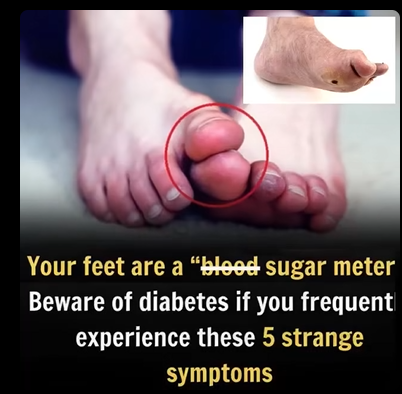
Diabetes often develops silently, sometimes for years, before showing clear symptoms. While many focus on diet or blood sugar, your feet can reveal early signs that something’s wrong. Because they carry your body’s weight and depend on good circulation, changes in your feet can offer crucial warnings.
. Numbness or Tingling
A “pins and needles” feeling may seem harmless but can be an early sign of diabetic nerve damage. High blood sugar harms tiny nerves in your feet, reducing sensation and increasing the risk of unnoticed injuries.
2. Burning or Sharp Pain
If your feet feel like they’re burning or you experience sudden shocks, especially at night, it could be neuropathy. Damaged nerves send false pain signals even without injury. Managing blood sugar early can ease these symptoms and prevent worsening damage.
3. Slow-Healing Wounds
Cuts or blisters that take too long to heal are a red flag. Elevated glucose slows blood flow and weakens immunity, making infections more likely. Check your feet daily, and see a doctor if healing lags.
4. Dry or Cracked Skin
Constant dryness or peeling may signal reduced sweat production due to nerve damage. Cracked skin invites bacteria and fungi, so moisturize regularly—but avoid between the toes.
5. Unusual Color Changes
Feet that turn red, pale, or bluish may indicate poor circulation or oxygen flow. This can result from damaged blood vessels or infection. Seek medical care if your feet change color or temperature.
Listen to What Your Feet Say
Your feet often reveal health issues before other parts of your body do. Inspect them daily, maintain healthy blood sugar, and schedule regular checkups. Small warning signs can prevent serious complications — if you act early.